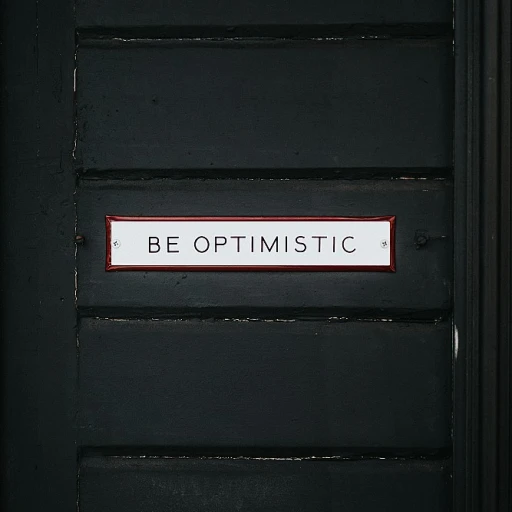
Understanding Internal Job Applications
Navigating Internal Job Applications: A Different Path
Applying for an internal position might seem like a straightforward process. After all, you already work within the company, you know the people and the culture, and you might even have spoken to the hiring manager informally. However, the internal job application process requires a unique approach compared to external opportunities. Understanding this can significantly influence your success rate. For starters, when you apply for an internal role, the expectations are different. The company already has access to your work history, your performance, and how you fit within the current team. This means your resume and application should focus on illustrating why you are a fit for the new position, rather than reiterating what the company already knows. Additionally, internal applications often involve unwritten rules that don't exist in external job searches. For example, discussing your application with your current manager before applying can demonstrate transparency and professionalism. It allows your manager to support you throughout the process and prevents any surprises later on. Another key aspect is understanding the timelines involved. Internal applications might move faster or slower than external ones. The timeline is influenced by numerous factors, such as the urgency of the hiring process, the qualifications of other internal candidates, or even company-wide job freezes. Finally, an internal job search involves navigating your company's culture and understanding what the decision makers prioritize. Speaking with colleagues or mentors who have successfully transitioned to new roles within your organization can provide invaluable insights. For more on effectively preparing for internal job interviews, you might want to explore some strategies for mastering interview preparation, applicable to a variety of roles.Common Reasons for Not Receiving an Interview
Overlooking Key Aspects in Your Application
When aiming for an internal job opportunity, it's common to assume familiarity and experience within the company will automatically secure you an interview. However, this is not always the case. Let's unpack some typical reasons why your job application might have been overlooked:- Incomplete or Generic Applications: Even though you know the company, your application still needs to be thorough. Missing important details or submitting a generic resume that doesn't align with the specific role can diminish your chances against other internal candidates.
- Lack of Alignment with the Role: The hiring manager is looking for candidates whose skills directly match the position's requirements. If your current work and accomplishments don't clearly demonstrate this alignment, there's a risk your application will be overshadowed by those who fit the role better.
- Assumption of Automatic Advantage: Being an internal candidate offers certain benefits, like understanding the company's culture. However, if you don't clearly communicate why you are the best fit for the new role, the decision maker might opt for someone else. Highlight your internal experience effectively to bolster your application.
- Underestimating the Importance of a Strong Cover Letter: A cover letter tailored to the role can significantly impact the recruitment process. It's a chance to explain why you aspire for the job and how your time at the company uniquely qualifies you for the new role.
Evaluating Your Application
Assess Your Application and Its Components
When you find that your application for an internal position wasn't successful in garnering an interview, it's crucial to take a close look at the elements of your job application. This evaluation will help you identify areas for improvement in the future.
First, consider whether your resume clearly communicated your qualifications for the internal position. Did you tailor your resume to highlight your relevant experience and skills? Sometimes, even though you're an internal candidate, it may be necessary to customize your resume specifically for the role you've applied for.
Additionally, review the job description for the position you applied to. Did your application address the key requirements and responsibilities outlined? The clearer the alignment between your experience and the job requirements, the more likely your application will stand out in the recruitment process.
It's also important to reflect on the clarity of your cover letter or email, if applicable. Did you effectively convey why you're interested in the position and how you can contribute to the team? Personalizing your cover letter to explain your connection and intentions with the role can be pivotal.
As an internal candidate, it's advantageous to seek insights from your current manager or colleagues who might have experience with the hiring team. Having a clear understanding of the interview process and expectations can lead to a better prepared application.
If you're unsure about the strengths and weaknesses of your materials, consider discussing them with someone in your company who is familiar with the hiring process. Their feedback can offer valuable insights into what might have been missing or overlooked in your application.
For additional guidance on understanding internal processes, consider reviewing understanding the role of a payroll specialist, which can provide further context on what employers look for in internal candidates.
Improving Your Internal Network
Building and Leveraging Your Internal Network
Considering internal mobility within your company can be a daunting task—especially if you feel like an outsider within your own organization. However, networking within your company can greatly enhance your chances to secure the interview for that internal position. Here's how you can strengthen your internal network and, in turn, your job prospects:- Engage Your Current Manager: Your current manager is in an optimal position to recommend you for an internal transfer. Keep open communication about your aspirations and ask if they support your move to another department. Their insight and encouragement can be invaluable in the hiring process.
- Connect with the Team: Engage with team members who are part of the department you're aiming to join. This could be through casual conversations or company events. Such interactions can provide you with a clearer understanding of the job application process and the dynamics of the team, thus improving your internal job prospects.
- Reach Out to the Hiring Manager: If appropriate, send a well-crafted email to the hiring manager of the internal position you're eyeing. Express genuine interest in the role and elaborate briefly on why you are a suitable candidate. Personal connections can sometimes make or break the hiring decision process.
- Recommendation from Peers: A positive word from colleagues who have worked closely with you can carry weight in the hiring process. Foster professional relationships and seek out peer recommendations if they fit naturally into your work environment.
Seeking Feedback and Learning from Experience
Actively Seeking Feedback
The hiring process for internal job applications can often involve detailed feedback mechanisms. Even if the outcome wasn’t in your favor, this is an excellent opportunity to gain insights and improve future applications. Once the decision has been communicated, promptly request constructive feedback about your job interview from the hiring manager. A well-crafted email can open doors to invaluable tips on how your application or interview could have been stronger.Learning from Experience
Reflect on the feedback you receive and assess what it means for your future applications. Was there a specific skill set that needed more emphasis on your resume? Did the hiring manager suggest areas where better qualifications are required? These insights can guide you in refining your approach not only for the current role you applied for but also for future internal positions. Consider if there were any interview questions that caught you off guard, and think about how you can prepare more thoroughly next time. Use this experience to make a list of possible questions and your responses, which will help you hone your skills for the hiring decision maker. Additionally, self-reflection is crucial. Analyze why a specific person may have been seen as a better fit for the position company role you applied for. Did they have a stronger internal network within the team? Or perhaps their application highlighted skills more in line with the position wasn?Building a Stronger Case for Future Applications
Finally, use your learnings to build a more compelling job application next time. Improve your internal network by engaging more actively with colleagues and the current manager. This network can serve as a valuable resource for career growth within the company. In conclusion, while it may be disappointing not to get an internal transfer interview, each step of the recruitment process provides learning opportunities that will better position you for future growth. Each role you didn't land is another chance to improve, align closer with your career goals, and ultimately secure your next internal opportunity.Preparing for Future Opportunities
Readying for Next Steps
Once you've gathered insights from previous applications, it's time to set your sights on the future. Being strategic about your next moves within the company is crucial to landing that internal interview.- Strengthen Your Application: Revisiting your resume and cover letter can help highlight the evolution in your skills and achievements since your last internal application. Tailor these documents to the specific role you're interested in, ensuring to emphasize any new competencies that align with the position.
- Practice Interview Techniques: Familiarize yourself with common interview questions and scenarios that the hiring manager might ask. This is especially important if the hiring process in your company has unique characteristics.
- Tap into the Recruitment Process: Reach out to the recruitment team or the internal hiring manager to better understand what they are looking for in an ideal candidate. This step can also help you anticipate potential questions and showcase your fit for the role.
- Timing is Key: Consider when to apply for the internal job. Align your efforts with the right time, so the decision makers can fairly assess your qualifications along with any other internal candidates.
- Network and Seek Guidance: Engaging with those who have successfully navigated an internal transfer can be invaluable. They'll offer firsthand advice on how to shine during the internal application process.












